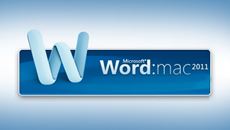- Delivery Method Online
- Professional Certificate
- 24hrs Suggested Study Time
- 3 Months Access
- Tutor Support
- Study On Any Device
- 763 Students
Adobe Acrobat X Fundamentals

Learn how to use Adobe Acrobat X to create PDF files and take advantage of its many time-saving features, communication options, and forms.
If all you think Acrobat does is create PDF files, you're in for a big surprise! In this course, you'll discover how to bring together a wide range of content from dozens of programs that you can reuse and customize in Acrobat X Pro. Need to change some text? No problem. Create a new file? That's easy. Add a page from this file and an image from that file? Or add a new page? Not a big deal. You can do all that and more!
Bringing together content is just the beginning. You'll work with many features, such as backgrounds, bookmarks, and modified page sizes to help unify your documents. You'll see how to protect your work using password security, and dig into the metadata within your PDF file. You'll discover how to add more to your documents as you learn about bookmarks and links for navigation. You'll even master some JavaScript!
You'll learn how Acrobat X can automatically find and configure fields on a page to convert it to a form. Then you'll use form tracking to send your form to others to fill in and send back to you, and see how Acrobat X collects the data automatically in a specialised PDF Portfolio.
You'll also see how Acrobat X can help streamline the entire collaboration process and simplify how you conduct, control, and manage a document review cycle. You'll even find out how to work in real-time using a chat window in Acrobat X or online using a free Web conferencing room. Finally, you'll discover how to wrap a set of PDF files (and other documents, too) into a PDF Portfolio, complete with a Flash interface and display features, to create the ultimate in customised presentations.
In each lesson, you'll work with an important Acrobat X Pro feature or process using source files (available for both Mac and Windows) provided with the course. You'll soon see why Adobe Acrobat X has become the best-selling Adobe software of all time!
Courses are delivered to you through expertly executed lessons, online instruction and interaction with like-minded students. Our courses are designed to deliver all of the benefits of studying in a classroom whilst giving you the flexibility to study at a time and place to suit your needs. You can access your classroom 24/7 from any device with an internet connection.
This course has a 3 month duration. You'll complete comprehensive lessons, quizzes and assignments before submitting your final exam at the end of the course to achieve your certificate. Courses must be completed within the 3 month access period.

Donna Baker
Donna Baker is a freelance graphic designer and author of many books on design software and Web design. She produces custom tutorials, videos, and infographics for Adobe TV. She's also an Adobe Certified Expert and Adobe Community Expert. As you m... Read more
Read Donna Baker's ProfileFrequently Asked Questions
The Learning Environment
From the moment that you enrol in the Adobe Acrobat X Fundamentals you will become an integral part of our learning community. You'll find yourself with the freedom to learn at a speed that suits you, on any device, from anywhere in the world. Achieving your career goals no longer has to mean compromising family and work commitments.
Our Values
Learn At Your Own Pace
We believe in personalised learning. That's why we provide all the tools and support you need to succeed at your own pace. With flexible learning, you'll stay motivated and retain more information. Plus, you can balance your studies with work and family commitments to make your dreams a reality.
We Won't Break The Bank
Education should be accessible to anyone who wants to learn. That's why we offer some of the most competitive prices in the industry with payments plans for just $25 per week. Investing in your future is a smart choice and doesn’t have to break the bank.
Industry-Led Courses
There's no better way to learn than from experts with years of experience in your field. That's why each of our 200+ industry-led courses are designed to give you a real-life perspective on your industry. With our expert mentors, you'll learn from people who have a wealth of knowledge and experience, and who are passionate about sharing it with you.
Get The Personal Support You Deserve
At Vibe Learning, we're real people who are dedicated to providing you with personal support every step of the way. Our industry experts are not only professional and knowledgeable but also incredibly passionate about sharing their expertise with you. With their guidance, you'll gain invaluable insights and practical knowledge to help you succeed.
Still looking?
Check out the following courses related to Adobe Acrobat X Fundamentals:



